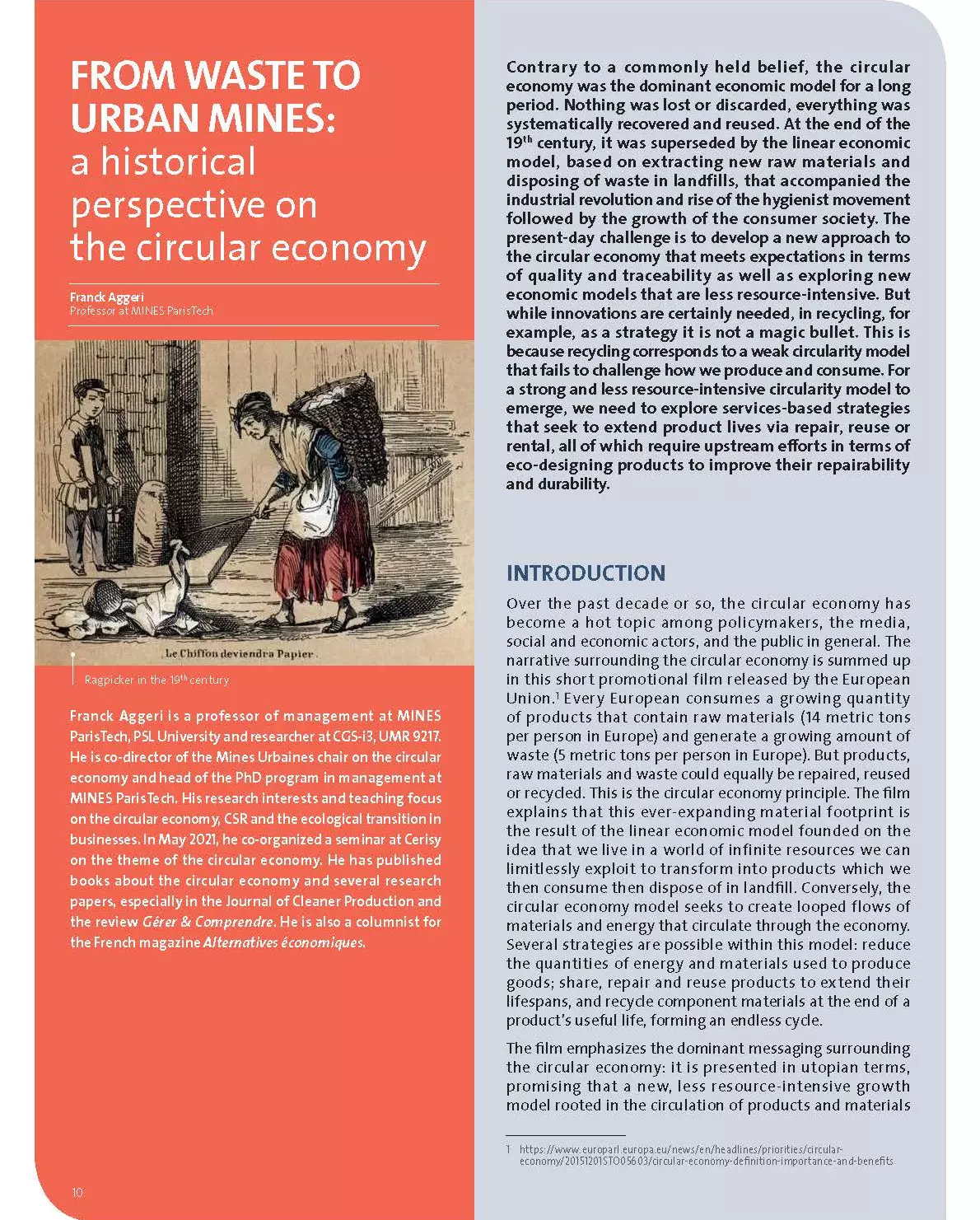Franck Aggeri
Professor at MINES ParisTech
Contrary to a commonly held belief, the circular economy was the dominant economic model for a long period. Nothing was lost or discarded, everything was systematically recovered and reused. At the end of the 19th century, it was superseded by the linear economic model, based on extracting new raw materials and disposing of waste in landfills, that accompanied the industrial revolution and rise of the hygienist movement followed by the growth of the consumer society. The present-day challenge is to develop a new approach to the circular economy that meets expectations in terms of quality and traceability as well as exploring new economic models that are less resource-intensive. But while innovations are certainly needed, in recycling, for example, as a strategy it is not a magic bullet. This is because recycling corresponds to a weak circularity model that fails to challenge how we produce and consume. For a strong and less resource-intensive circularity model to emerge, we need to explore services-based strategies that seek to extend product lives via repair, reuse or rental, all of which require upstream efforts in terms of eco-designing products to improve their repairability and durability.



